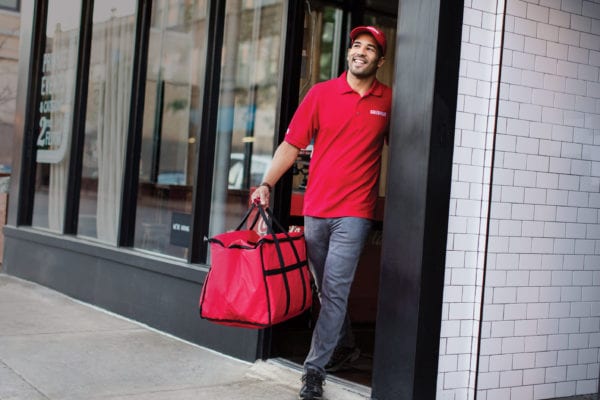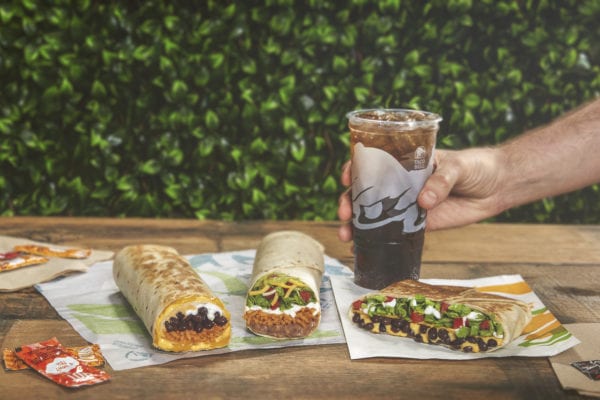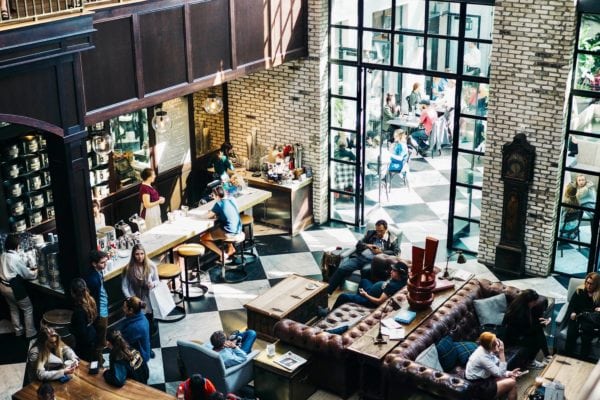WINNERS
James Beard Awards Announced Monday in Chicago
The internet has made food awards ceremonies more relevant to a mass audience, and Monday night’s James Beard Awards ceremony in Chicago was no exception. While major television networks aren’t likely to carry food award ceremonies in the same way they’d broadcast, say, the Oscars, the awards were available via livestream on Facebook, Periscope, and on the JBFA website giving food- and restaurant-enthusiasts a live look at the action and events. Congratulations to all of the winners!
PIZZA
“Domino’s, Turn on the Porch Light.”
Domino’s, fresh off of its expectations-beating Q1 earnings report, announced a fun partnership to make its Pizza Tracker even more novel and useful at the same time. The partnership, with IFTTT (that’s, If This Than That), uses the Pizza Tracker to trigger various digitally-connected actions. For example, when your pizza is out for delivery, set your porch lights to come on automatically.
IFTTT essentially hooks any two digitally-connected things together. In this case, the Domino’s Pizza Tracker has five stages: order placed, prep, oven, quality check, and out for delivery. Customers can set events triggered by their pizza’s status in any one of those five categories. Text your roommates when your pizza is out for delivery. Turn on the TV when your pizza goes in the oven. Play a victory song on your phone after you place an order. Domino’s offers a few pre-set options, but anyone can customize the experience to your own taste. It even connects to a robotic vacuum cleaner, party time!
UGH
The Unicorn Frappuccino Was Only the Beginning
So… we’re calling the Unicorn Frappuccino innovation now? “Innovation” in this case really means “a product that can go viral on the internet by looking somehow remarkable on Instagram. Unsurprisingly, the candy-colored Unicorn Frap was a viral hit for Starbucks, driving traffic to its stores and brand awareness on social media. In its earnings call last week, Starbucks executive chairman, Howard Schultz, promised there’s more viral hits to come. If you can’t wait, InStyle has some info on the secret Starbucks menu, which includes a drink called “baby vomit latte.” I wish I was kidding.
I don’t want to hate on dishes created to look good on-camera, as this has inspired plenty of gorgeous plates and ingredient combinations… but let’s stop short at calling swirls of food dye and sugar “innovation,” please.
DELIVERY
GrubHub by the Numbers
One benefit of the total over-saturation of food delivery companies in the market is that it forces all of the players, from tiny to huge, to innovate and compete to survive. This leads, presumably, to better service. But, for now at least, it looks like the biggest company is coming out on top. Grubhub is outperforming expectations, with 8.75 million people placing orders in the first quarter of 2017. Other notable numbers: an average of 324,000 orders per day, totaling $898 million. Only $17 million of that was booked as profit, but that first quarter number is really, really close to One Billion Dollars. With numbers like this (and a spike in stock price to prove it), it seems GrubHub is undetered by the plethora of delivery services springing up around the country. One reason: GrubHub doesn’t just focus on major markets; instead they’re fanning out to suburbs and locations beyond the major metropolitan areas (though UberEats isn’t far behind). Recent partnerships with chain restaurants like Chilis and TGIFriday’s have helped its nationwide appeal, too. Plus, over 10,000 GrubHub-supported restaurants have no delivery fee at all — a pretty serious advantage when you might be paying $10 for a burger through another service.
Of course, Grubhub has the distinction of not only being the largest of the major delivery services in the country, but also one of the few with publicly traded stock, hence the transparency into its numbers, operations, and future plans.
TABLESIDE
Humans, Robots, Labor, Ordering, and Touch Screens of the Future
While it’s unlikely robots will replace the human touch in today’s fine-dining restaurant, the final issue of Lucky Peach (sniff.) tackles tech at the table in America’s favorite chain restaurants, like Olive Garden and Applebees.
The piece focuses heavily on labor at sit-down chain restaurants, asking the question of whether or not tableside technology could replace a human workforce (apparently data says yes, but humans say no) — but also how the two might work together. Orders placed via touchscreen are more accurate and a tab paid at the table means less friction — freeing up human waitstaff to be human, spending more time delivering the food, talking to the customer, and maintaining quality. Interestingly, one study found diners spent an average of $7 more when ordering from a tableside tablet and they spent less time in the restaurant, meaning another table turn, more guests, and more cash for the business. The article dives deep into the technology and the automation question deeper than most others, though the answer to the question, “Are robots the waitstaff of the future?” is still a strong “nope.”
Digestifs:
- New York Chef Wylie Dufresne uses his iPhone to time his wait for coffee. He refuses to wait more than eight minutes. Love this. — NYTimes
- How to make money in the restaurant business — Crain’s New York
- McDonald’s debuts the frork, a completely useless utensil made from french fries, with a great spoof infomercial — McDonald’s YouTube




